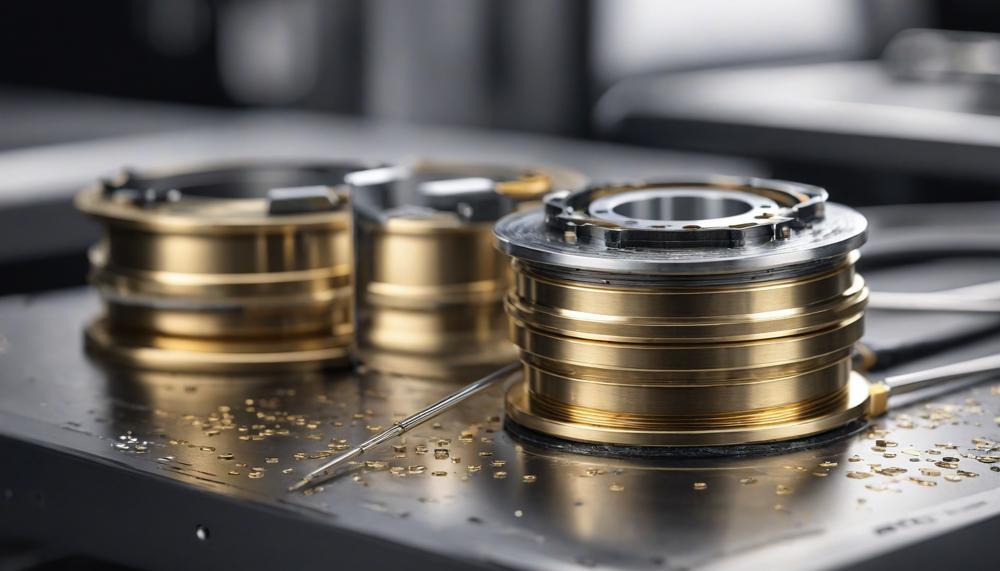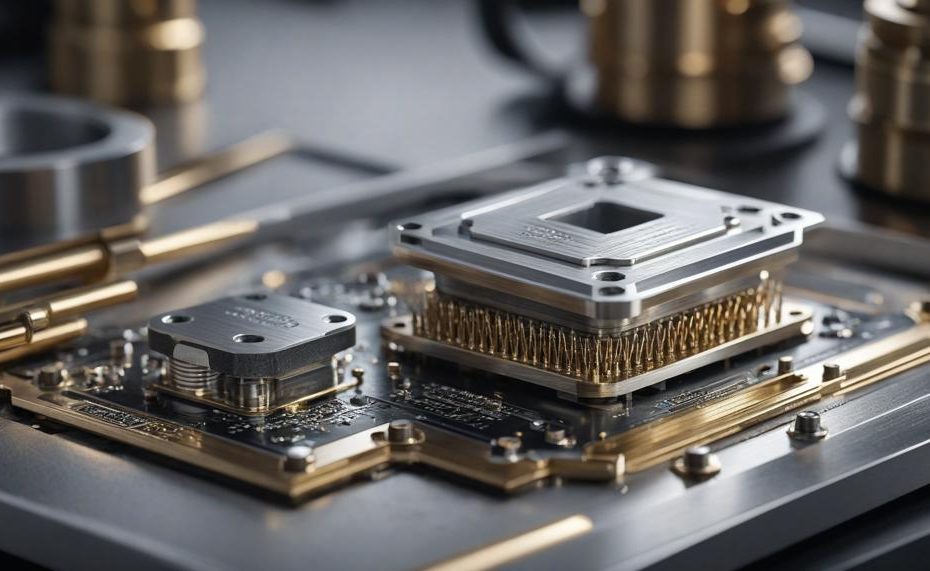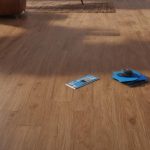Yes, brass can be soldered to aluminum, but it requires some special techniques and considerations. Successfully joining these two metals is a vital skill for many DIY enthusiasts, hobbyists, and professionals working on diverse projects, from automotive repairs to custom art pieces. However, it’s not as straightforward as soldering similar metals, due to the distinct properties of brass and aluminum.
To achieve a strong and durable bond, the key lies in meticulous surface preparation and selecting the right solder and flux. Using an intermediate layer, such as a zinc-based solder or aluminum bronze alloy, can effectively bridge the gap between these dissimilar metals. This process is crucial for ensuring a stable connection, especially given the different melting points and thermal expansion rates of brass and aluminum.

Here are the key takeaways:
- Surface Preparation: Clean and prepare the surfaces meticulously to remove any oxide layers and contaminants.
- Intermediate Layer: Use zinc-based solder or aluminum bronze alloy to facilitate bonding.
- Soldering Technique: Carefully control the soldering temperature to avoid damaging the metals.
- Advantages: Strong bond, electrical conductivity, and cost-effectiveness.
- Alternative Methods: Consider adhesives for ease of application or mechanical fastening for detailed installations.
- Brazing: Provides excellent heat resistance and a robust bond but requires careful attention to compatibility issues.
Understanding these techniques and tips will empower you to confidently tackle projects that require joining brass to aluminum, ensuring a professional and reliable outcome.
Table of Contents
What Is Soldering?
Soldering is the technique of joining two metal surfaces using a filler metal known as solder. Here’s a detailed look at how the process works:
| Step | Description | Tools/Materials |
| Preparation | Clean metal surfaces, apply flux | Cleaner, Flux |
| Heating | Heat surfaces with soldering iron | Soldering Iron |
| Applying Solder | Melt solder onto heated surfaces | Solder |
| Cooling | Allow joint to cool and solidify | — |
| Inspection | Check joint quality | — |
Soldering is widely used in electronics to create strong electrical connections. It’s also used in plumbing and jewellery making.
Can You Solder Brass?
The short answer is yes, you can solder brass. Now, let’s delve into the specifics of soldering brass to aluminum.
Process for Soldering Brass to Aluminum
Soldering brass to aluminum involves several meticulous steps, requiring specific materials to achieve a strong bond between these metals. Here’s a detailed guide:
- Surface Preparation: Clean both the brass and aluminum surfaces thoroughly to remove any oxides and impurities. This can be done using sandpaper or a wire brush.
- Flux Application: Apply flux to both surfaces. Flux helps to remove oxidation and improve the adhesion of the solder to the metals.
- Heating: Use a propane torch or a soldering iron to heat the metals. It’s crucial to apply heat evenly to avoid warping.
- Applying Solder: Once the metals are heated, apply a specialized zinc-aluminum solder. This type of solder has a lower melting point, which is ideal for joining brass and aluminum.
- Cooling: Allow the joint to cool naturally. Avoid any sudden changes in temperature to prevent cracking.
- Inspection: Check the solder joint for any weak spots or incomplete bonding. A well-soldered joint should be smooth and even.
Necessary Materials
| Materials | Description | Purpose |
| Zinc-Aluminum Solder | Specialized solder for bonding brass and aluminum. | Creates a strong, reliable bond between the metals. |
| Flux | Cleaning agent applied to metal surfaces before soldering. | Removes oxides and improves adhesion. |
| Propane Torch or Soldering Iron | Heating tool. | Provides the necessary heat to melt the solder. |
| Sandpaper or Wire Brush | Abrasive tool for cleaning surfaces. | Removes impurities and oxides from the metal surfaces. |
How To Solder Brass
Soldering brass to aluminum requires specific steps and materials to ensure a strong, reliable bond between the two metals. Here’s a detailed guide:
| Step | Description | Materials Needed |
| Surface Preparation | Clean the surfaces of both brass and aluminum thoroughly to remove any dirt, grease, or oxidation. Use a wire brush or sandpaper for this task. | Wire brush, sandpaper, cleaning solvent |
| Apply Flux | Apply a suitable flux to both metals. Flux helps to prevent oxidation during the heating process and ensures the solder adheres properly. | Aluminum flux, brass flux |
| Preheat the Metals | Gradually heat both brass and aluminum pieces using a torch or soldering iron. Preheating helps to prevent thermal shock and ensures even heating. | Propane torch or soldering iron |
| Apply Intermediate Layer | Use a zinc-based solder or an aluminum bronze alloy as an intermediate layer to bridge the gap between brass and aluminum. Apply this layer to the preheated metals. | Zinc-based solder or aluminum bronze alloy |
| Solder the Joint | Once the intermediate layer is in place, apply the final solder to the joint. Ensure the solder flows smoothly and covers the entire joint. | Appropriate solder (e.g., silver solder) |
| Cool and Clean | Allow the joint to cool naturally. Once cooled, clean off any residual flux and inspect the joint for any defects. | Cleaning solvent, brush |
Materials and Tools Needed
- Flux: Suitable for both brass and aluminum.
- Solder: Zinc-based or aluminum bronze alloy as an intermediate layer, and a final solder like silver solder.
- Torch or Soldering Iron: For heating the metals.
- Cleaning Tools: Wire brush, sandpaper, cleaning solvent.
- Safety Gear: Gloves, safety glasses.
Additional Tips
- Safety Precautions: Always work in a well-ventilated area and wear appropriate safety gear to protect against burns and fumes.
- Even Heating: Ensure both metals are heated evenly to avoid weak joints or warping.
- Patience: Soldering can be tricky; take your time to ensure a strong, clean bond.
For more detailed guidance on soldering techniques, you can refer to reputable sources like the Wikipedia page on soldering or expert soldering tutorials on trusted websites.
Does Solder Stick to Brass?
Yes, solder can be used to join brass and aluminum together. This process is feasible and involves several key steps to ensure a strong and reliable bond. Here are the details:
Steps to Solder Brass to Aluminum
Surface Preparation
Clean both brass and aluminum surfaces to remove any oxide layers, dirt, or grease.
Use fine sandpaper or a wire brush to ensure the surfaces are clean and roughened slightly, which helps the solder adhere better.
Applying Flux
Use a suitable flux designed for both brass and aluminum to prevent oxidation during the soldering process.
Apply the flux generously to both surfaces.
Choosing the Right Solder
Select a solder that is compatible with both metals, typically a zinc-based solder works well.
Ensure the solder has a melting point lower than that of both brass and aluminum to avoid damaging the metals.
Heating the Metals
Use a soldering iron or a torch to evenly heat both metals.
Avoid overheating to prevent weakening the metals or causing oxidation despite the flux.
Applying Solder
Once the metals are hot enough, apply the solder to the joint area.
Allow the solder to flow and cover the joint completely, ensuring a strong bond.
Cooling and Cleaning
Let the joint cool naturally.
Clean off any residual flux to prevent corrosion.
Advantages of Soldering Brass and Aluminum
| Advantages | Description |
| Strong Bond | Soldering creates a durable joint capable of withstanding mechanical stresses. |
| Electrical Conductivity | Soldered joints maintain excellent electrical conductivity, suitable for electronic applications. |
| Cost-Effective | Soldering is generally more affordable compared to other joining methods like welding or brazing. |
| Versatility | Soldering can be used in various applications, from plumbing to electronics. |
Conclusion
Joining brass to aluminum is not as straightforward as soldering similar metals, but with the right techniques, it is certainly achievable. Soldering these two metals together is essential for various applications, from automotive repairs to crafting unique art pieces, and requires careful attention to detail to ensure a strong, durable bond.
The process begins with meticulous surface preparation. Cleaning both brass and aluminum to remove oxide layers and contaminants is crucial for a successful bond. The next step involves using an intermediate layer, such as zinc-based solder or an aluminum bronze alloy, which helps to bridge the gap between the two dissimilar metals. This intermediate layer addresses the distinct melting points and thermal expansion rates of brass and aluminum, preventing potential bonding issues.
The actual soldering process requires precise temperature control to avoid damaging the metals. Ensuring a steady, even application of heat is key to achieving a reliable joint. The cooling phase should be gradual to prevent cracking and ensure the integrity of the bond.
Overall, while soldering brass to aluminum presents challenges, the rewards include a strong, conductive, and cost-effective joint. For those seeking an easier route, adhesives or mechanical fastenings offer alternative methods, each with its own benefits.






